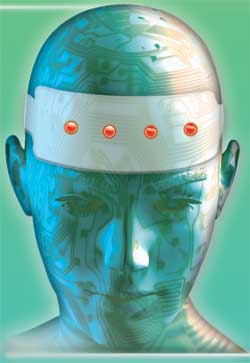New Citations | Stimulation and Mental Processing
 Recent developments regarding electric stimulation and mental processing have lead to interesting developments in psychophysiology and physiological sciences. The following studies look at developments in how we potentially care for and understand solutions to issues with mental health, as well as new ways to monitor electrical stimulus on participants.
Recent developments regarding electric stimulation and mental processing have lead to interesting developments in psychophysiology and physiological sciences. The following studies look at developments in how we potentially care for and understand solutions to issues with mental health, as well as new ways to monitor electrical stimulus on participants.
The ventromedial prefrontal cortex (vmPFC) is responsible for the learning, recall, and fear of extinction for those exposed to traumatic situations, and the area most effected by posttraumatic stress disorder (PTSD). In examining if a new method of PTSD treatment, transcranial direct current stimulation (tDCS), could alter vmPFC processes, researchers created a controlled scenario to illicit fear-related conditioning. BIOPAC research systems were used to measure the skin conductance response (SCR) as well as deliver an electric shock to participants. Study participants inspected two sets of images while a baseline SCR was measured, and then they were instructed to look over the images again, but warned an electrical shock could be administered, and if administered, should identify a pattern in relation to their spacing. While under these testing conditions, a portion of the participants received tDCS. Researchers found a slight difference in groups treated with tDCS, finding they did “moderately better” with memory recall. Though the effects were slight, the researchers were still optimistic for future research and the potential of tDCS as a treatment option.
Children with autistic spectrum disorder (ASD) can have diet selectivity and narrower preferences to foods than other developing children. Researchers measured electrodermal response (EDA) from a sample of children exposed to different foods; they hoped to gain insight on physiological sensory processing and its relationship to dietary decisions. Using BIOPAC’s wireless EDA transmitter with electrodes placed on participants arms, they measured participant reactions as a variety of sixteen foods were presented and offered to them. Researchers did find differences in EDA with those with ASD, as well as a correlation to food preference and sensory over responsibility.
With developing electronic stimulus treatments (like tDCS mentioned above), researchers have identified the potential use of electric field mapping to monitor the electric stimulation received in such treatments. Researchers compared commonly used MRI and other electric field imaging methods to DT-MREIT, a newer mapping method that can offer insight on current density and overall conductivity of electric stimulation. BIOPAC’s STMISOC voltage stimulator was used, providing 128 100-volt pulses to a piece of bovine muscle (beef tissue). Researchers mapped the electric stimulation with a variety of methods and compared it to the DT-MREIT. They found the new method allowed for a different perspective on magnetic field mapping, and they encouraged applying this method to measuring actual participants.
BIOPAC offers a variety of equipment that can be used in studies similar to the ones cited here. Learn more in free on-demand and upcoming stimulation webinars, or contact BIOPAC to discuss solutions for recording and analyzing data, .
Stay Connected